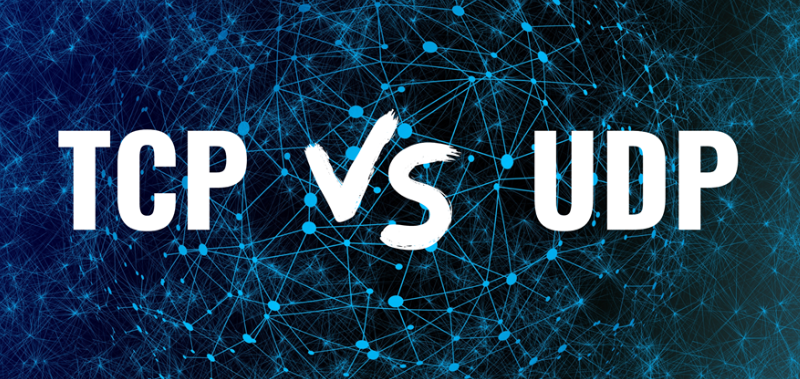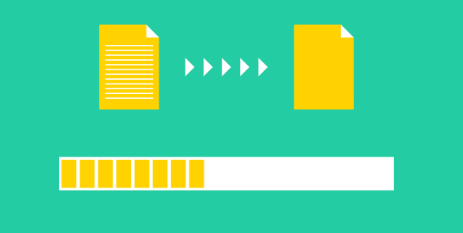Which is Faster between TCP and UDP?
December 6, 2022The TCP/IP protocol set includes hypertext transfer protocol (HTTP), text transfer protocol (FTP), remote login protocol (Telnet), internet protocol (IP), internet control message protocol (IMCP), etc. In the TCP/IP protocol family, there are two distinct transport protocols: TCP (Transmission Control Protocol) and UDP (User Datagram Protocol)
In this article, we'll continue with what TCP and UDP are, the difference between the two, and which protocol is faster! If you are interested, keep reading!

What is TCP?
TCP stands for Transmission Control Protocol, a transport layer protocol that allows packets of data to be sent from one location to another. It is a connection-oriented transfer protocol, that is to say, before sending and receiving data, a reliable connection must be established with the other party.
A TCP connection must go through three "dialogues" before it can be established. It is a solid protocol. Because, the receiver will always provide the sender with an acknowledgement message about the data packet, either positive or negative, the sender can always know whether the data packet has reached its destination or needs to be resent.
Whenever a data packet is received over TCP, the receiver sends an acknowledgement to the sender. In case of failure, it requests a re-transmission. It guarantees that data reaches its destination and arrives in the same order as it was sent. It has a built-in error checking and recovery system responsible for providing end-to-end communication. TCP also provides access to flow control and quality of service.

What is UDP?
UDP stands for User Datagram Protocol. Which is the most basic transport layer communication protocol of the TCP/IP protocol suite. It uses minimal communication mechanisms. In UDP, the receiver does not generate an acknowledgement of a packet, nor does the sender wait for an acknowledgement of a packet.
Since data transmission does not establish a connection when using UDP transfer protocol, there is no need to maintain connection status, including sending and receiving status, so one server can transfer the same message to multiple clients at the same time. At the sending end, the speed at which UDP transmits data is only limited by the speed at which the application generates data, the capabilities of the computer, and the transmission bandwidth; Read a message segment.
UDP transfer protocol does not need to perform a three-way handshake to establish a connection before sending data like TCP transfer protocol. If you want to send data, you can start sending. And it is only a porter of the data message, and will not perform any splitting and splicing operations on the data message. Because TCP needs to establish a connection, and ensure reliability and order, it is time-consuming. That's why video streaming, broadcast TV, online multimedia games, etc. choose to use UDP.
The Difference between TCP and UDP
1.TCP is a connection-oriented protocol, UDP is a connectionless protocol.
TCP uses a three-way handshake to establish a connection before sending data, and UDP does not need to establish a connection before sending data.
2. TCP is reliable, UDP is not reliable.
TCP lost packets will be automatically retransmitted, UDP will not (any necessary reliability must be provided by the application layer).
3. TCP is ordered, UDP is out of order.
Messages may be out of order during transmission, messages sent last may arrive first, TCP will reorder them, UDP will not.
4. TCP file transfer protocol, UDP file transfer protocol.
Because TCP needs to establish a connection, and ensure reliability and order, it is time-consuming.
Maybe a graph is more clearly!
| TCP | UDP | |
| Speed | Slower | Faster |
| Connection | Connection-oriented | Connectionless |
| Acknowledgement | Acknowledgement sent by the recipient | No acknowledgement is sent |
| Reliability | High | Low |
| Transfer method | Stream | Individual packets |
| Applications | File transfer, email, web browsing | Video conferencing, gaming, broadcasts |
| Congestion control | Yes | No |
Summary of TCP & UDP
- TCP is a connection-oriented, reliable, ordered, and slow protocol; UDP is a connectionless, unreliable, unordered, and fast protocol.
- TCP overhead is larger than UDP, the TCP header needs 20 bytes, and the UDP header only needs 8 bytes.
- Overall, UDP is a faster, simpler, and more efficient protocol. But TCP allows the retransmission of lost packets.
Which is Faster between TCP and UDP?
UDP is a connectionless protocol, while TCP is a connection-oriented protocol.
TCP is slower than UDP, which is one of the main differences between the two protocols. TCP is slow and UDP is fast.

Bonus Tips: Improve Your File Transfer Speed
In the MFT (Managed File Transfer) solution, Raysync uses a self-developed high-speed transfer protocol, which not only supports error retransmission, and resumed transmission, but also supports file block verification. It enables files to be transferred at the highest speed under the user's bandwidth, while also ensuring 100% correctness of large file transfers.
In addition, Raysync also supports two high-speed file transfer protocols, UDP and TCP. Enterprises can choose from four transfer modes:
1. Automatically select UDP and TCP, and can be set to automatically switch to TCP when the delay is lower than a certain millisecond.
2. Only use UDP.
3. Only use TCP.
4. Choose UDP first, and automatically switch to TCP when UDP fails to communicate.

If you think Raysync could be a good fit for your organization, schedule a demo or learn more here.
Conclusion
Both TCP and UDP have their uses. If the main concern is the reliability and order of data reception, you will prefer to use TCP. On the other hand, if speed is the main concern and the corruption or loss of some packets is not that important, choose UDP.
So as you can see, you have to compromise between reliability and speed. If one of them is raised, the other will be lowered due to the preceding constraints.
TCP is used for HTTPS (Hypertext Transfer Protocol Secure), HTTP (Hypertext Transfer Protocol), SMTP (Simple Mail Transfer Protocol), FTP (File Transfer Protocol), and more.
UDP is used for video streaming, video telephony, Voice over IP (Internet calling), DNS (Domain Name System), and more.